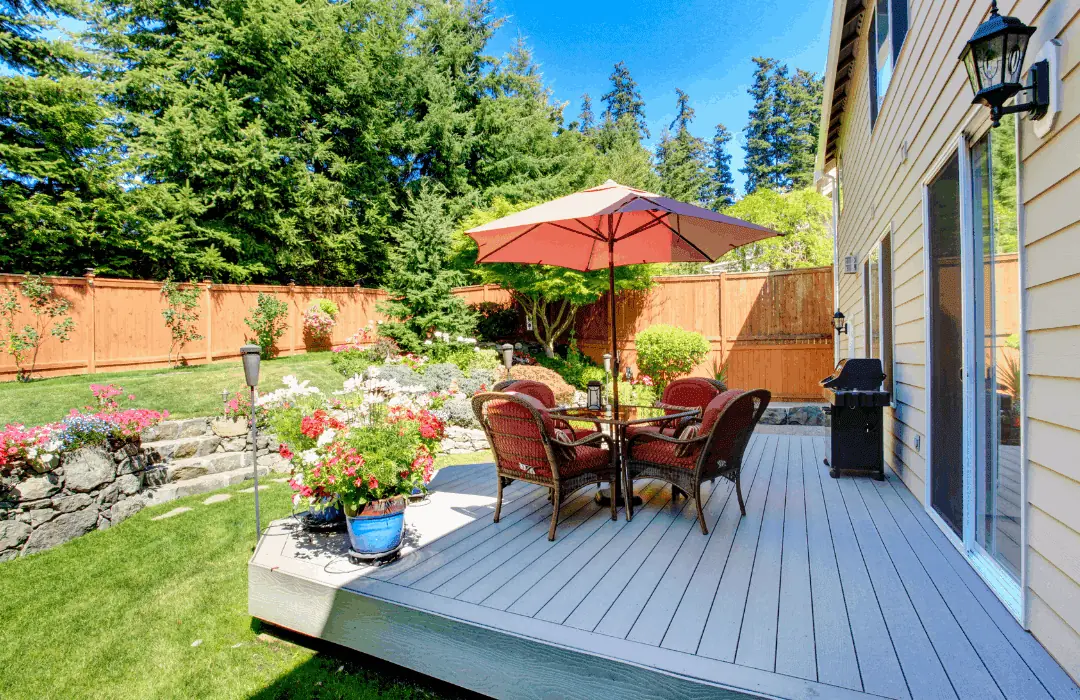Hardscaping 101: Retaining Walls

Need support or depth? You might think the answer is to seek a therapist, but not in this case. If it is your landscape that needs structural help and support, then the solution is a retaining wall. Unfortunately, a retaining wall also can be expensive and time consuming. Avoid pitfalls with the tips I’ve learned in the past 15 years as a landscape designer in Northern California. Read on to learn everything you need to know to make a retaining wall project a success: What is a retaining wall?
As the name implies, a retaining wall is a structure that retains mass behind it. The most basic purpose of a retaining wall is to battle, and one hopes, win against gravity and the forces of nature. Retaining walls are found in places where extra support is needed to prevent the earth from moving downhill with erosion. Many types of materials (including concrete, wood, or rocks) and a variety of building techniques are used to create retaining walls. Some are easier to install, others have a shorter life span, and some are more expensive, but all retain soil.
When do I need a retaining wall? Here are a few main reasons for building a retaining wall:
To prevent erosion: If your house is downhill from soil fault lines, you need to control and minimize erosion. Even if erosion isn’t currently threatening your house, under the right—or wrong—conditions, you could have serious structural problems. Science lesson: In an earthquake, land typically slides away from fault lines and so a retaining wall provides necessary support. Also, if the soil around a downhill foundation is washing away, or erosion from a slope is compacting an uphill foundation, a retaining wall can help.
To create flat, usable land: Many clients of mine want a sport court or more parking space, so we suggest retaining walls for this purpose.
To create definition on a hill: Retaining walls can create terraces on slopes.
To divert rainwater: Water runoff is not a friend. You need to manage and divert water into a drainage system. Retaining walls help slow the flow of rainwater.
To add seating: Design your retaining wall with a flat top to provide a usable place to sit.
As a replacement: If your current retaining wall is failing—meaning it’s bulging, cracking, or leaning like the Tower of Pisa—it’s time for an upgrade.
What are the best materials and styles for retaining walls?
Most retaining walls are made from wood, stone, or concrete. When choosing a material, factor in cost, aesthetics and the material suitable for your job.
Note: all the types require proper drainage and some may require a building permit so definitely check with your local building department. Wood. Typically, timber walls are the least expensive. However, you should keep in mind that timber walls may not last as long as other options, since moist soil weakens wood despite the fact that the choice wood is usually rot resistant like cedar, redwood, or pressure treated (treated with a preservative).
There are variations on the wood theme such as timber and boards, and steel I-beam with boards. Steel I beam or “soldier pile” retaining walls are used with walls over 4’ high. These walls have to be engineered and are designed to hold back large hillsides or to create a usable and sizable space. Natural stone. A stone retaining wall can have a naturalistic character. Some are dry stacked and some are mortared in place.
Veneered stone. Concrete blocks or poured concrete walls can be faced with stone or brick to give it a more specific look. Are retaining walls a DIY project? Being a total do-it-myselfer (is that even a word?) I would love to say that building a retaining wall is a great weekend project. The truth? Simple, low walls (under 3 feet high) on stable, easy sloping ground are doable projects. But…and there’s always a but, in some cases you must also have intermediate carpentry skills, have some select tools, and love hauling mountains of dirt. The double truth: if your wall is higher than 3 feet and your slope is steep, then I strongly recommend you hire a structural engineer, soils engineer, and a skilled contractor to do the design and installation.





















